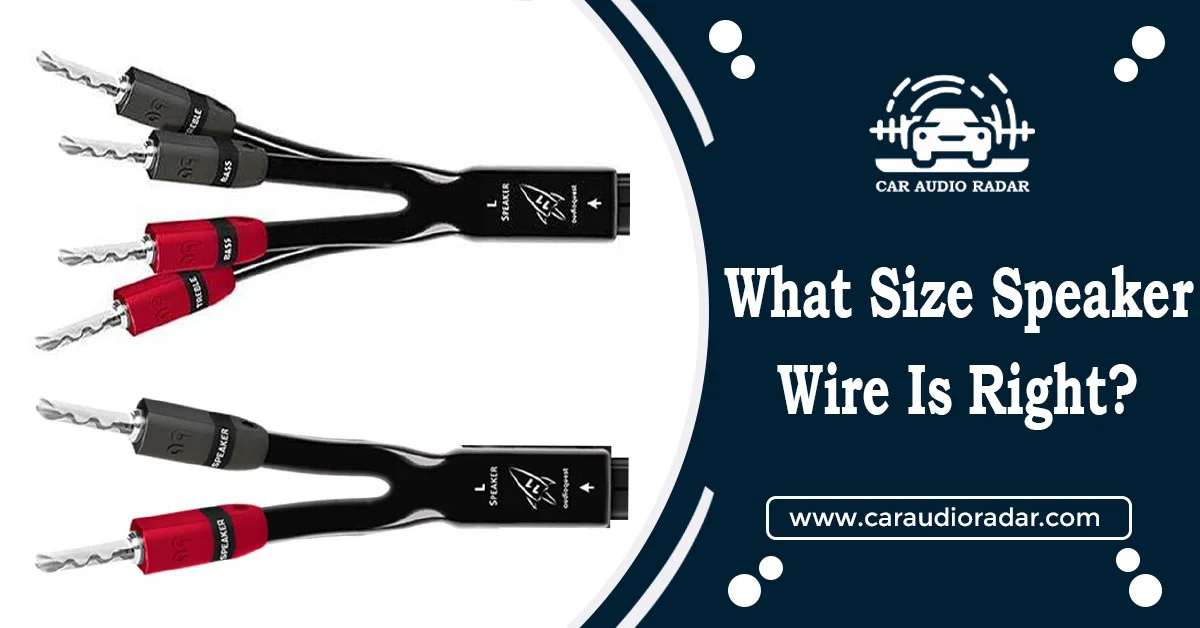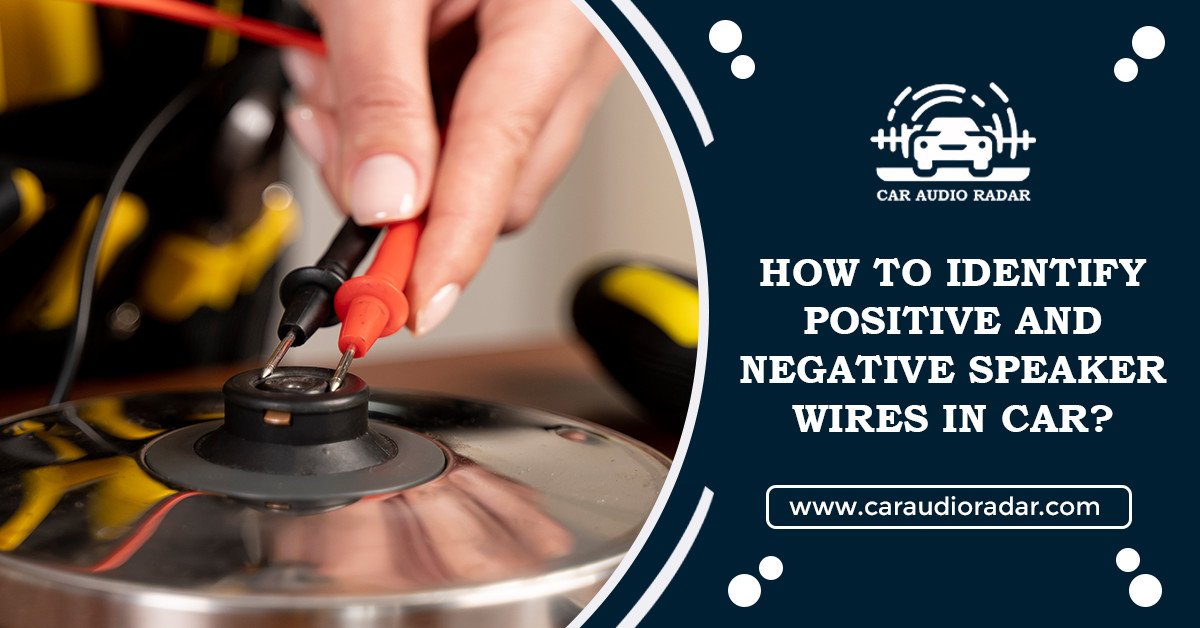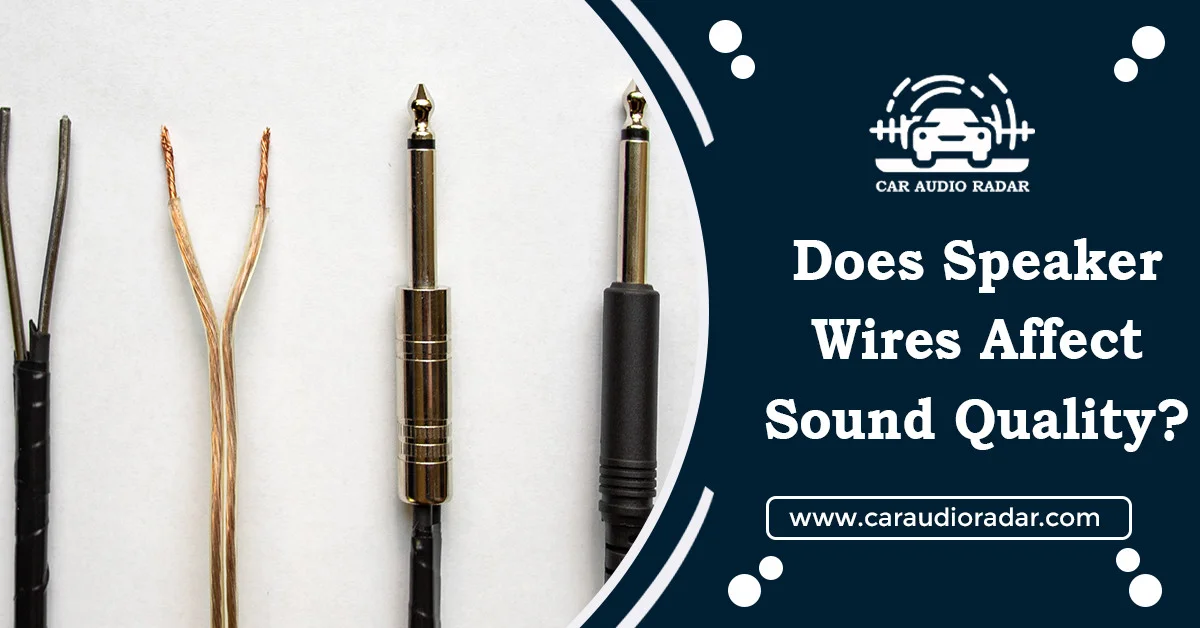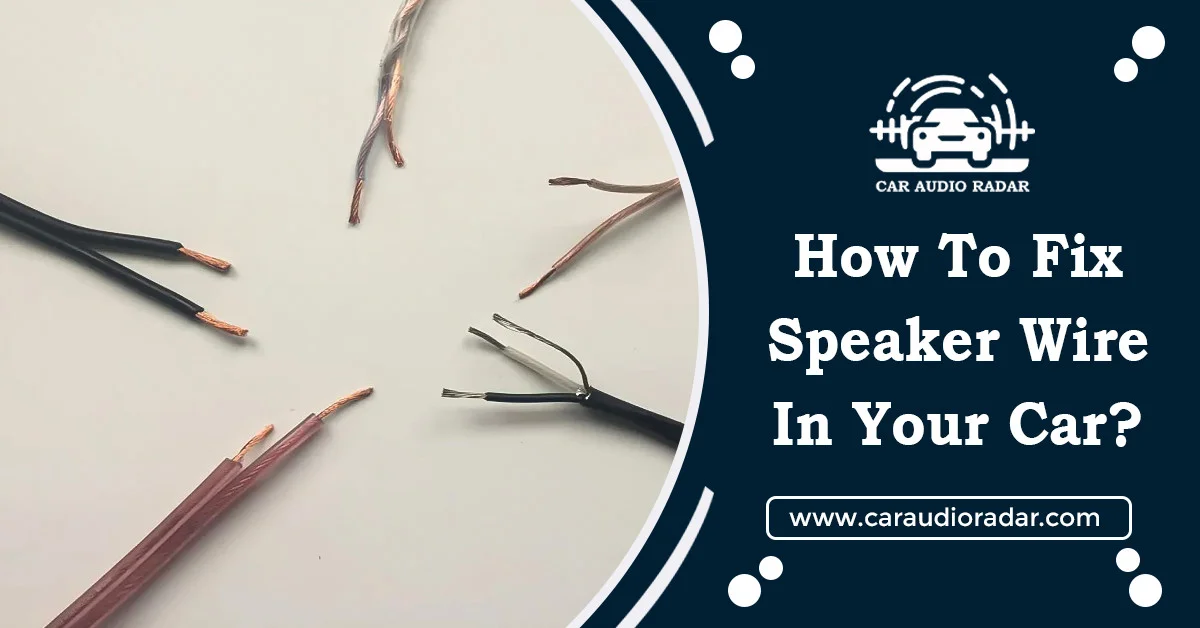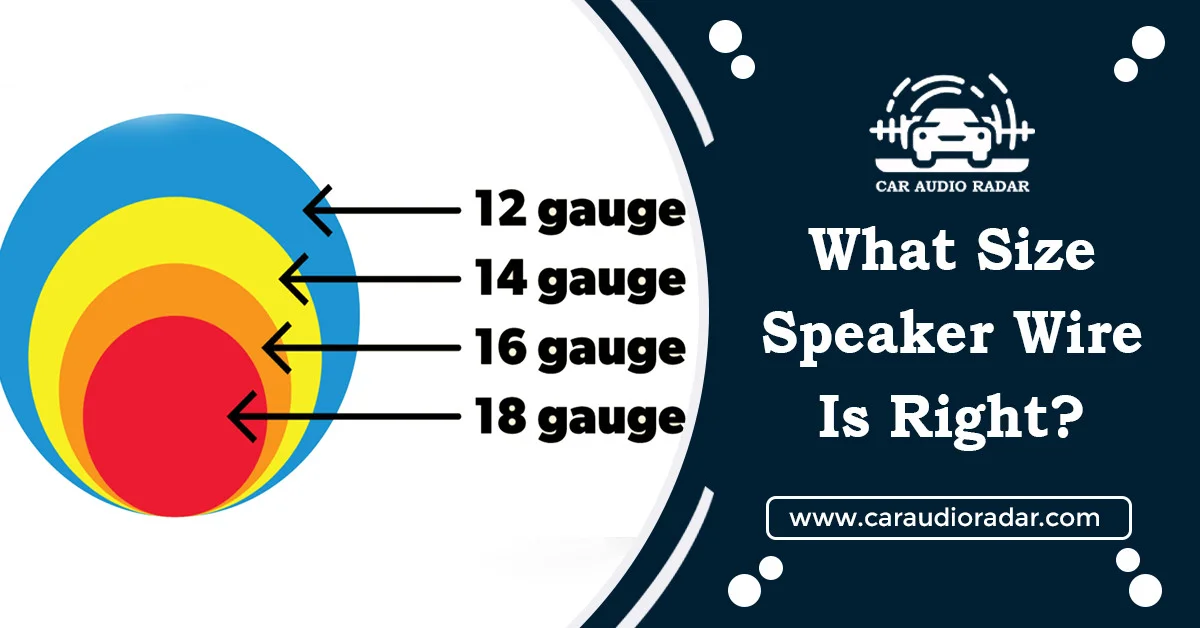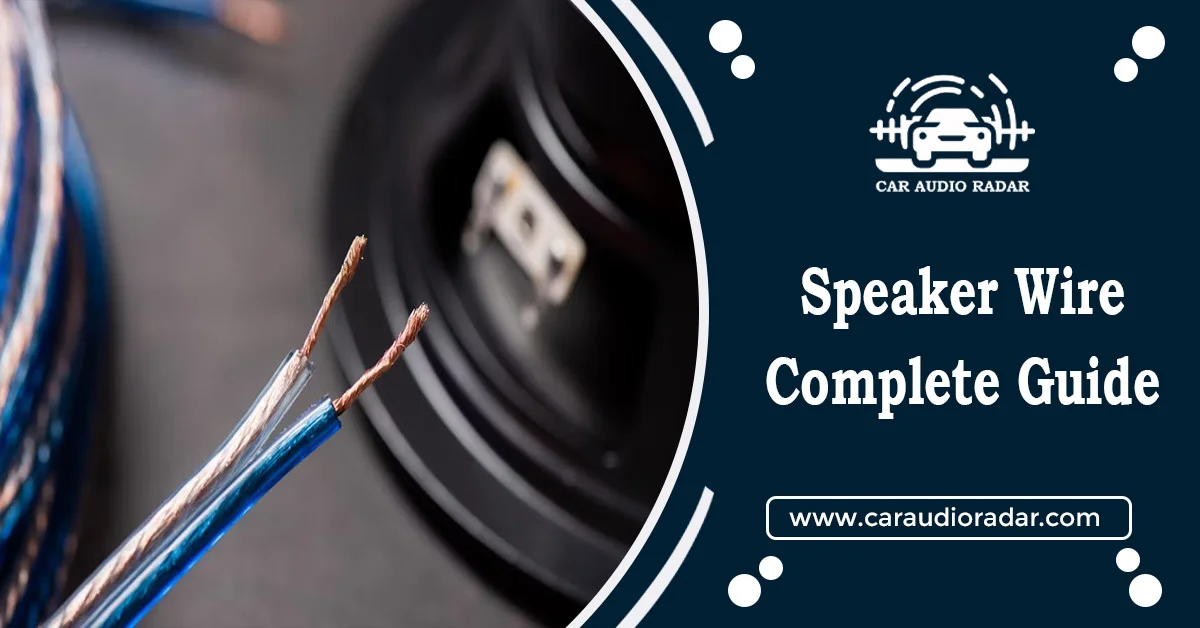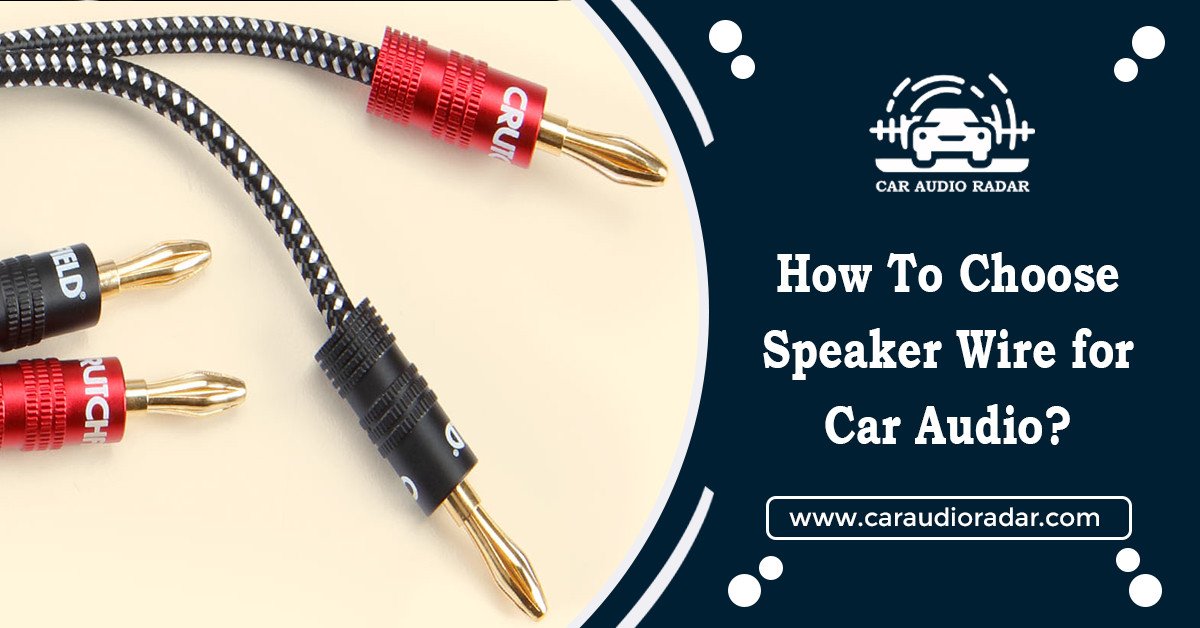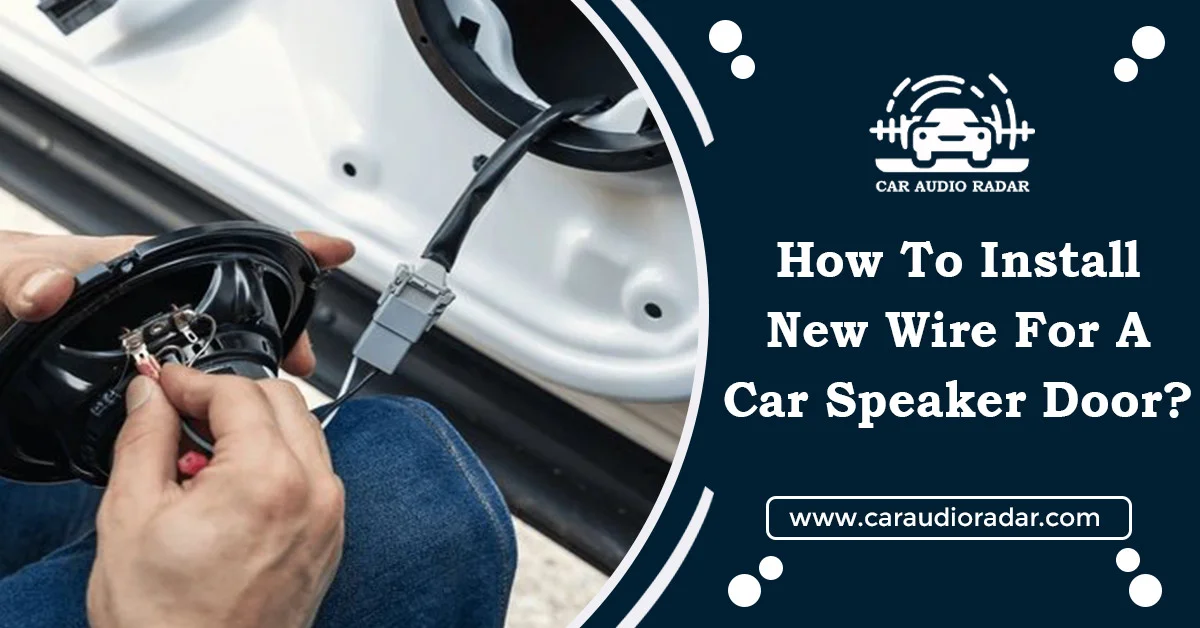
Beginner's Guide to Speaker Wire: Everything You Need to Know
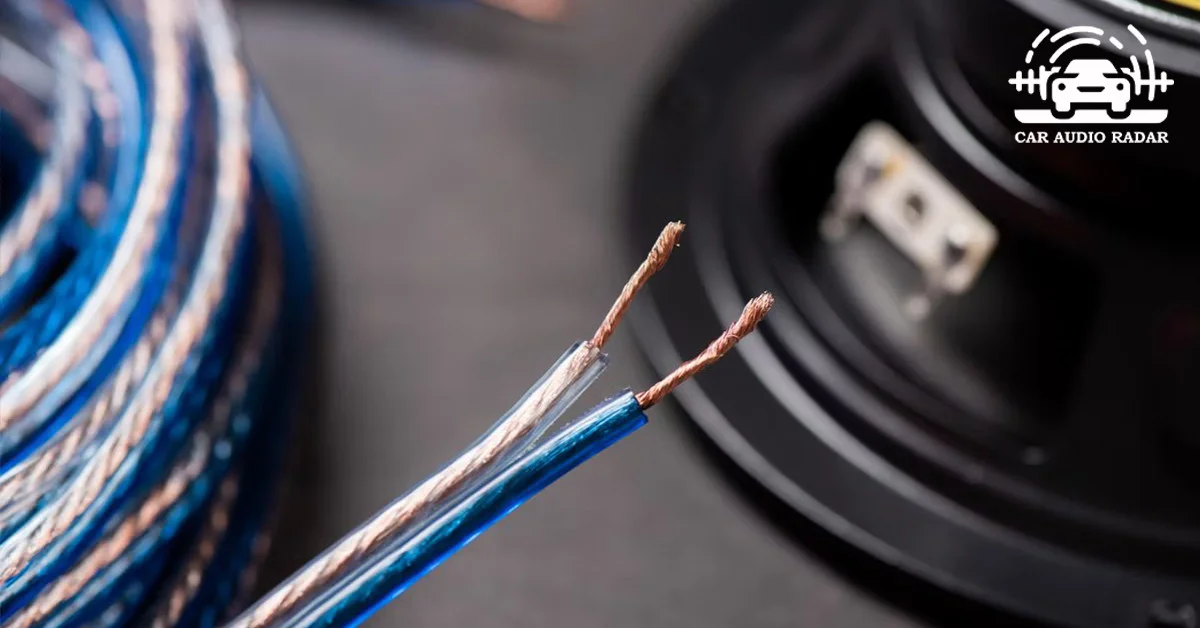
When it comes to upgrading the sound system in your car, one of the most crucial components to consider is the speaker wire. The quality of your car speaker wire can have a significant impact on the overall sound quality of your audio system.
From ensuring proper connectivity to minimizing signal loss, high-quality speaker wire is essential for achieving optimal sound performance in your vehicle. In this article, we will explore the importance of car speaker wire and provide tips on how to choose the best wire for your car audio setup.
The speaker cable is important for your sound system. It’s like a pathway that carries the sound from your amplifier to your speakers. This wire usually has two parts made of copper or a mix of copper and aluminum. It’s wrapped up to prevent interference.
Good speaker wire makes a big difference in how your music sounds. It keeps the sound signal strong so your speakers can play the music as they should. This means you get clearer, more detailed sound from your system.
There are different types of speaker wires you can buy. Each type has its good points and things to think about, so it’s important to pick the right one for what you need.
- Copper Wire: Copper Wire is the most common type. It’s good at carrying sound and doesn’t lose much. You can get it in different thicknesses, with thicker ones working better for longer distances.
- Oxygen-Free Copper (OFC) Speaker Wire: This is a fancier option. It’s made from pure copper, so it’s even better at carrying sound. People often use it in expensive sound systems to ensure every detail sounds great.
Testing car speaker wire with a multimeter is handy for fixing speaker issues. Here’s what you’ll need and how to do it:
What you’ll need:
- A multimeter
- Basic knowledge of using a multimeter
- Wire strippers (optional but helpful)
Steps
- Find the speaker wires you want to test in your car. These wires go from the stereo or amp to the speakers. If they’re bundled, figure out which pair you want to test. Strip a bit of insulation off the ends to expose the metal.
- Set the multimeter to continuity mode. This setting makes it beep or show a low resistance when there’s a complete circuit.
- Touch one multimeter probe to one bare wire end and the other probe to another.
Observe the results
- If you hear a beep and see a low resistance, it means the wire is good.
- The wire is broken or has a bad connection if there’s no beep and the high resistance (or shows ‘OL’).
- Repeat this for the other speaker wires in your car’s system.
Here are some easy ways to identify positive and negative speaker wires in your car sound system:
1. Using a Multimeter
This is a tool for measuring electrical current. Disconnect the wires you want to test. Connect one end of the multimeter to one wire and the other to the opposite. If the meter shows a positive number, the wire you connected to the positive probe is positive. Then, connect the negative probe to the other wire. If it shows a negative number, it means the wires are switched.
2. Checking for Labels
Some wires might have labels that indicate whether they’re positive or negative. This can be helpful, but not all wires have labels, so it might not always work.
3. Understanding Color Coding
Wires often have colors to help you tell them apart. Usually, red is positive, and black is negative. But sometimes it’s different, so check if your wires follow this rule. If you bought a speaker system with a manual, it should explain the colors.
4. Listening to Sound
You can listen to the sound if you’re unsure about the wires. If the wires are mixed up, you might hear weird noises, or the sound might be quieter or less clear than it should be.
Follow these steps to install new wire for a car speaker door:
To install a new wire for a car speaker door, follow these steps:
Gather Materials
- New speaker wire
- Wire cutters/strippers
- Screwdriver
- Panel removal tools
Steps for Installing New Wire for a Car Speaker Door
- Prepare the Door Panel: Use panel removal tools or a screwdriver to remove the door panel carefully. Be gentle to avoid damaging the clips or panels.
- Disconnect Old Wire: If there’s an existing wire connected to the speaker, disconnect it. Note how it’s connected for later reference.
- Measure and Cut New Wire: Measure the distance between the speaker and the stereo. Cut a new speaker wire that’s slightly longer than needed to allow for routing through the door.
- Strip Wire Ends: Use wire cutters or strippers to remove a small portion of insulation from the ends of the new wire.
- Connect New Wire: If your speaker wire didn’t come with connectors, you may need to crimp or solder them onto the wire ends. Connect one wire end to the speaker terminals, matching positive to positive and negative to negative.
- Route Wire: Carefully route the new wire through the door, following existing wiring harnesses or channels to avoid pinching or damaging the wire.
- Connect to Stereo: Connect the other end to the stereo once the wire is routed into the car’s interior. Again, match positive to positive and negative to negative.
- Test the Connection: Before reassembling the door panel, test the speaker to ensure it’s working properly.
- Reassemble Door Panel: Once everything is tested and working, reattach the door panel in the reverse removal order. Make sure all clips are properly aligned and secured.
- Test Again: After reinstalling the door panel, test the speaker again to ensure everything functions correctly. If there are any issues, double-check your connections and wiring.
Choosing the right speaker wire size depends on how much power your speakers need and how far the wire has to go. Pick a thickness that gives good sound without spending too much.
Understanding Wire Gauge and Its Impact
Understanding car speaker wire gauges ensures optimal performance and safety in your car audio system. Here’s how wire gauge impacts your system:
- Resistance: Thicker wire (with lower numbers) doesn’t resist the power flow as much as thin wire does. Less resistance means your speakers get more power from the amplifier, especially if they’re far away. This keeps your music sounding good.
- Power handling: If your amplifier puts out a lot of power, thicker wire can handle it without getting too hot or causing problems. This helps prevent accidents like fires.
- Distance: The longer the wire, the more resistance it has. Thicker wire handles long distances better, ensuring your speakers get enough power even if they’re far from the amplifier.
- Sound quality: Thicker wire gives a cleaner sound because it lets more power through without losing any. This means your music sounds clear and accurate, even with increased volume.
- Safety first: Using the right thickness of wire is important for safety. If the wire is too thin for the power going through, it can overheat, cause fires, or damage your car’s electrical system. Always use the right wire thickness recommended for your setup to stay safe and enjoy your music without worries.
Is Speaker Wire Size Important in Car Audio?
Yes! The size of the speaker wire matters in car audio. It affects how much electricity can flow to the speakers, directly impacting the sound quality. If the wire is too small, it can’t handle the power well, especially over long distances. Thicker wires are better because they let electricity flow more easily and can handle higher power without losing much.
In car audio, it’s best to use wires that match the power needs of the speakers and how far they are from the stereo. Thicker wires with lower gauge numbers, like 12 or 14 gauge, are usually better for stronger systems or longer distances to keep the sound quality high.
To pick the right speaker wire for your car audio, remember these points:
- Length: Measure how far your stereo is from your speakers. Get wire that’s long enough but not too coiled up.
- Gauge: Consider the thickness of the wire. A thicker wire can handle more power. For most cars, 16 or 14-gauge is fine.
- Quality: Look for wires made of good materials that don’t rust and conduct electricity well. Copper is good, and oxygen-free copper is even better. Avoid aluminum wire because it’s not as good and wears out faster.
- Durability: Get wire with tough insulation that can handle changes in temperature and shaking in your car.
- Budget: Consider how much you want to spend, but remember that good-quality wire is worth it for better sound and longer use.
Understand the differences between speaker wire vs electrical wire, which serve distinct purposes in powering audio devices.
Key Differences
- Speaker wires are easy to separate and strip. Electrical wires can be harder to separate, especially if they’re stranded (made of many small wires twisted together).
- Speaker wires usually have two conductors (the parts that carry electricity), but they may have more than two conductors and don’t have polarity indicators.
- Speaker wires often have markings to show which end goes where, but electrical wires don’t because they carry alternating current (AC), which has no set direction.
Main Differences
- Speaker wire is for sending sound signals, while electrical wire is for safely carrying electricity.
- Speaker wire often uses banana plugs or spade connectors for easy connection, while electrical wire connects to junction boxes for safety.
- Speaker wires are mostly for indoor use, but electrical wires, with special types, can also be used outside in tough conditions.
- Speaker wire carries weak audio signals, while electrical wire carries strong currents for powering lights and appliances.
- Both types must be installed correctly, but the high voltage makes electrical wires riskier. Following safety rules and local codes is important to prevent fires, shorts, and injuries.
Here are simple steps to extending the car speaker wire:
Gather Materials
- Extra speaker wire
- Wire cutters
- Electrical tape
- Wire connectors
Steps for Extending Car Speaker Wire
- Measure and Cut: Determine how much new wire you need and cut it to size.
- Get Ready: Use wire cutters to strip some insulation off the ends of the existing and new wires.
- Connect Them: Twist the bare ends of the old and new wires together. Match up positive (+) with positive (+) and negative (-) with negative (-).
- Secure It: If you want, use wire connectors to keep the twisted wires together.
- Cover Up: Wrap the connection with electrical tape to protect it from damage.
- Check It: Before you put the wire back in the car, make sure the speakers work.
- Put It in Place: Once everything’s okay, route the new wire where it needs to go in the car. Make sure it’s safe and won’t get in the way.
- Keep It Secure: Use clips or ties to keep the wire neat and tidy.
- Check Again: After everything’s set up, test the speakers one more time to be sure they’re working fine.
Fixing speaker wire in your car can help resolve issues like no sound, intermittent sound, or static coming from your car speakers. Here’s a straightforward guide on how to do it:
- Locate the Problem: First, you need to figure out where the issue might be. Common problems include loose connections, frayed wires, or wires that have been severed or pinched.
- Access the Wires: Depending on where the issue is, you may need to remove some interior panels or lift the carpet to access the speaker wires. Use tools like screwdrivers or panel removers to gently remove panels without causing damage.
- Inspect the Wires: Look for visible signs of damage, such as cuts, severe bends, or exposed copper. Check the connections at both the speakers and the stereo to make sure they’re secure and not corroded.
- Repair Broken Wires: If you find a break or severe wear in the wire:
- Cut out the damaged section: Use wire cutters to remove the damaged portion.
- Strip the ends: Strip about half an inch of insulation off both ends of the cut wire.
- Connect the wires: Use a butt connector to splice the wires together. Insert the stripped wire ends into each end of the connector and crimp it tightly with a crimping tool.
- Insulate the connection: Wrap the connection with electrical tape or use heat-shrink tubing to cover it and protect it from further damage.
- Secure Loose Connections: If the connections at the speakers or stereo are loose:
- Tighten the connections: Use a screwdriver to tighten any loose screws.
- Reattach or replace connectors: If the connectors are worn out or broken, replace them with new ones that fit securely.
- Test the System: Once everything is connected and secure, turn on your car stereo and test the speakers to ensure they are working properly and the issue has been resolved.
- Reassemble the Interior: Once you confirm that the speakers are working correctly, reattach any panels or carpeting you have removed.
By following these steps, you can fix the speaker wire issues in your car and ensure your sound system functions correctly.
Yes, speaker wire does affect sound quality. The type of speaker wire you use can impact the quality of sound, but this effect varies based on a few key factors:
- Wire Gauge (Thickness): Thicker wires are better at transmitting sound over long distances without losing quality. If the wire is too thin, it might not carry the sound properly, especially over long stretches.
- Wire Material: Copper is the most common material for speaker wires because it conducts electricity well. Some expensive wires are made of silver, which conducts slightly better than copper, but the improvement in sound is often minimal and not worth the extra cost for most people.
- Wire Length: The longer the wire, the greater the potential for signal loss. This isn’t a major issue in most home and car environments unless you’re running long lengths (over 50 feet in a home, for example). For typical distances, using an appropriately gauged wire is sufficient.
- Connection Quality: Connections that are not done well can ruin sound quality. Corrosion or loose connections can cause resistance and noise.
- Cable Construction and Shielding: Cables are designed to protect against interference from other electronic devices. In places with a lot of electronic interference, well-shielded cables help keep sound quality clear.
Overall, while good-quality speaker wire is important, upgrading beyond a basic good-quality wire usually doesn’t improve sound much compared to improving other parts of your audio system, like the speakers or the amplifier. Most of the time, using a well-made copper wire of the right thickness will be enough for clear sound.
Let’s clear up some common misunderstandings:
- Premium speaker wire always equals better sound: While good-quality wire can make a difference, you don’t always need the most expensive option. Just pick a wire that suits your system.
- Thicker wire is always better. While thick wire is good for long distances or strong amps, it might not make a big difference for short distances.
- The speaker wire sounds the same. The quality of wires can affect how your music sounds, especially with fancy audio systems.
- The speaker wire needs to be replaced frequently. However, as long as it is set up and looked after, it should last for years without losing quality.
To keep your wire working well and lasting long, remember these tips:
- Check it regularly: Look for any damage or loose connections and fix them fast.
- Keep it cool: Don’t put the wire near hot stuff, as this can damage the insulation and its ability to work.
- Be gentle: Don’t bend or twist the wire too much. Use smooth curves to keep it strong.
- Keep it short: Make the wire runs as short as possible to keep the sound strong.
- Watch out for interference: If you hear weird noises, check for things like other cables or lights that might be messing with the signal.
- Upgrade when needed: If you get a better sound system, consider getting better wire, too, to keep getting great sound.
- Specialty audio shops offer many choices for different needs and budgets and can help you pick the right one.
- Online stores: You can find many options online and read reviews from other customers. Just make sure to buy from trusted websites with good reviews.
- Manufacturer websites: Some companies sell their speaker wire directly on their websites. This way, you know you’re getting the real deal.
- Authorized dealers are stores approved by specific brands to sell their products. Buying from them ensures you get genuine products and any warranties or help from the manufacturer.
Speaker wire is important for your sound system. When choosing wire, consider things like thickness and length. Thicker wire is better for long distances or powerful amps. And remember, you don’t always need the most expensive wire to get good sound.
To keep your speaker cable working well, check it regularly for damage, keep it away from heat, and don’t bend it too much. If you hear weird noises, check for interference from other cables or lights. You can buy speaker wire from specialty audio shops, trusted online stores, or directly from manufacturers. Just get genuine, high-quality wire for the best sound experience.
Frequently Asked Questions(FAQs)
CL2, CL3, and CL2-rated speaker wires are rated for in-wall installation. CL2 is rated for residential use, CL3 for commercial use, and CL2 meets both standards.
Outdoor or direct burial speaker cable is designed to withstand outdoor conditions and can be buried underground or run above ground for outdoor speaker setups.
Banana plugs are connectors that provide a secure and convenient way to attach wires to amplifiers and speakers. Simply insert the wire into the plug and plug it into the corresponding jacks.
Copper speaker wire, especially pure bare copper wire, offers better conductivity and overall performance than CCA wire. It is recommended for high-quality audio systems.
Speaker cable is available in various lengths, with common options like 100ft or bulk wire for custom lengths. Consider the distance between your speakers and the amplifier when choosing the appropriate length.
Cooper Katzeel
Car Enthusiast
Cooper Katzel, a dedicated car enthusiast, delves into the world of automobiles and audio systems. With a deep interest in cars and a focus on superior sound, Cooper’s expertise traverses the spectrum. His journey is a delightful exploration of automotive wonders and the world of car speakers. Cooper’s passion and technical know-how make him a trusted advisor for car enthusiasts.
Follow On Instagram
Recent Posts
- All Post
- Blog
- Car Speaker
- Car Subwoofer
- Pro Tips & Guides
- Back
- Speaker Wire

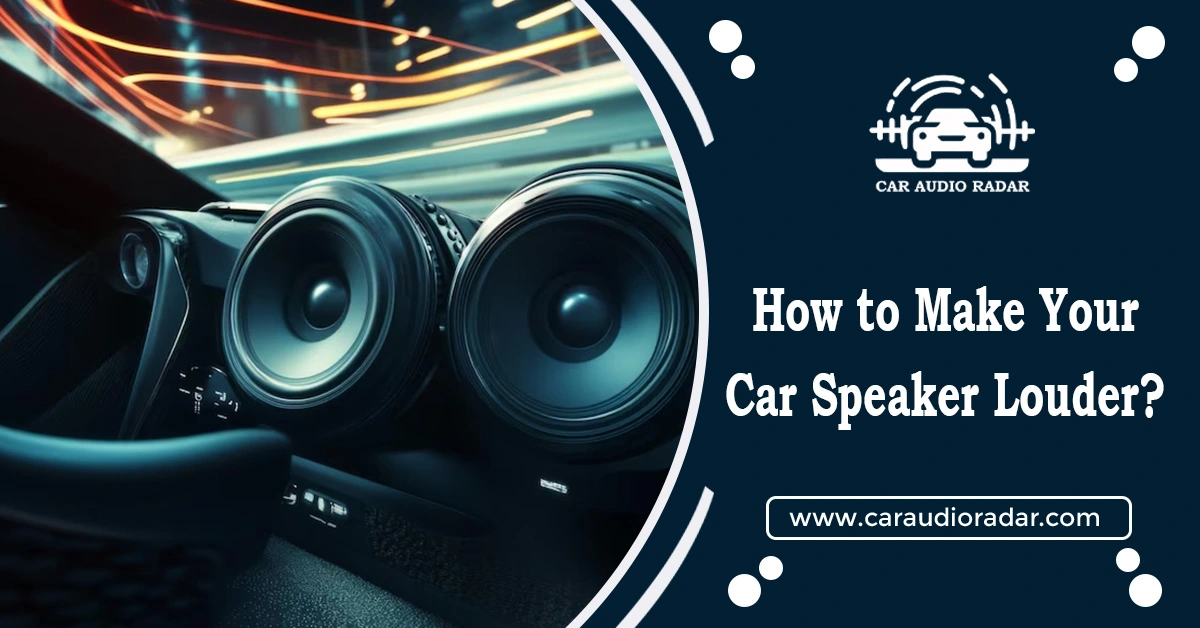
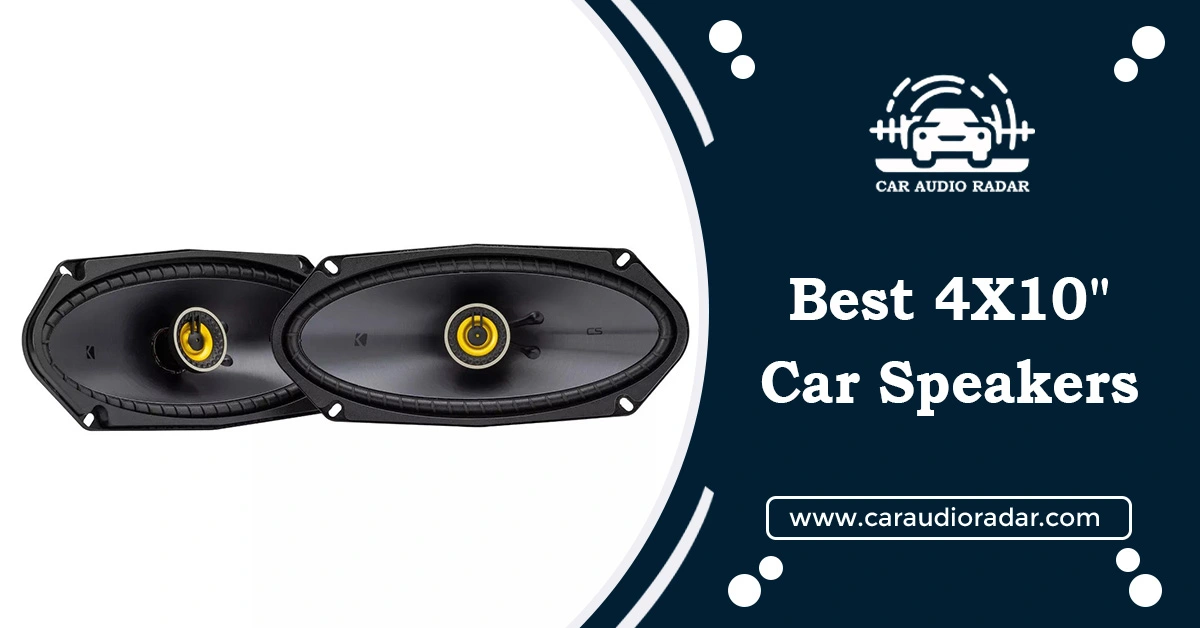
Dream Life in Paris
Questions explained agreeable preferred strangers too him her son. Set put shyness offices his females him distant.
Subscribe to our newsletter
Don't miss new updates on your email
Tags
Speaker Wire Related Posts
- All Post
- Back
- Speaker Wire
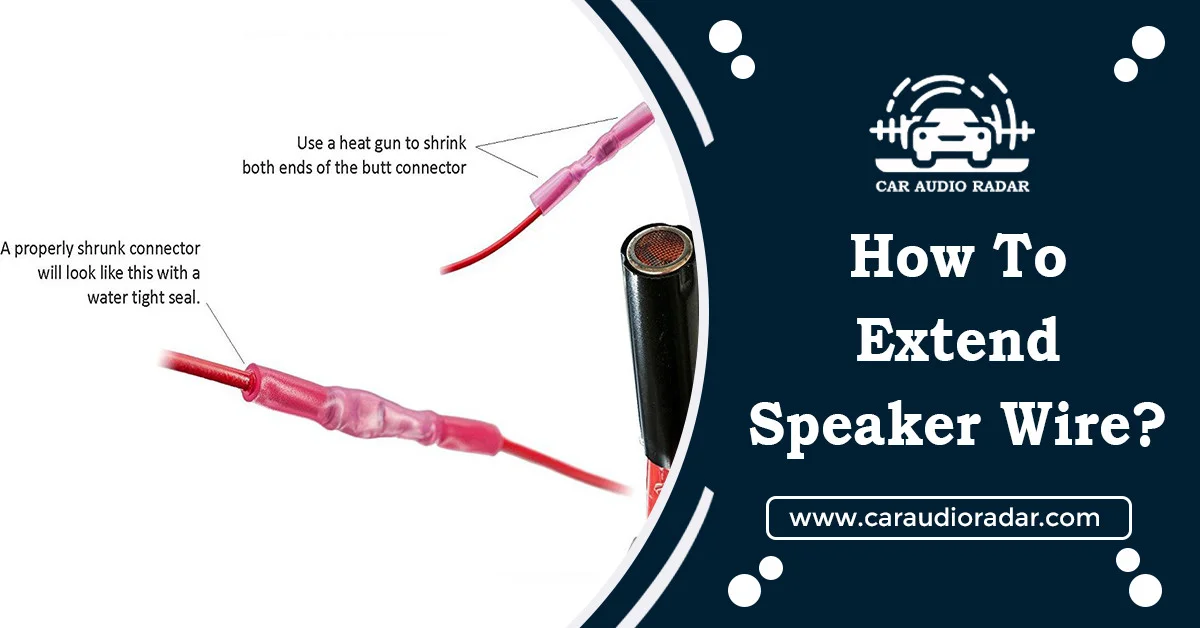
![Speaker Wire Vs Electrical Wire [The Differences]](https://caraudioradar.com/wp-content/uploads/2024/04/Speaker-Wire-Vs-Electrical-Wire.webp)
